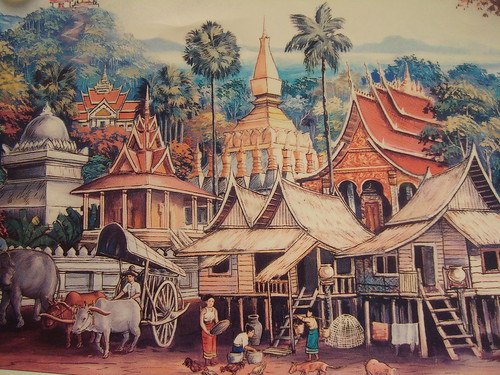
Or: Steampunk without the steam?
When I think about steampunk, I tend to most often connect it to an aesthetic marked by brass gears and springs, oil and leather, goggles and clanking machinery. It's much broader than that of course. But that's been the imagery I've noticed most.
When I think about steampunk, I tend to most often connect it to an aesthetic marked by brass gears and springs, oil and leather, goggles and clanking machinery. It's much broader than that of course. But that's been the imagery I've noticed most.
Looking at vintage tomorrows and retro-futures, I wonder if Lao steampunk has to deal with industrialization as the ultimate social aim. Or can we explore a vibrant alternative, a sustainable route of technological and social development? Less brass, more bamboo, obviously comes to mind:
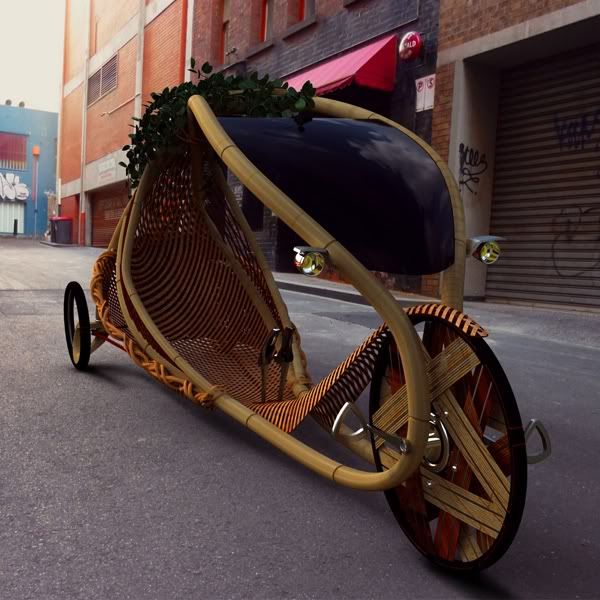
An example of this technology might be similar to iterations of Alexander Vittouris' project to grow a bamboo bicycle through arborsculpture. Using a hard skeletal mold, Vittouris forced the natural growth of bamboo into the form of a bicycle frame. Vittouris' concept is to provide wholly sustainable personal mobility by reassessing our production methods. He asks what would happen if we considered the product lifecycle as a natural growth process. What an intriguing alternative to conventional industrialization that could be explored in Lao steampunk.
When something like this is more time intensive in the manufacture, would it change a Lao society's values? Would they go to greater efforts to avert the destruction of objects grown in such a manner? Or would they consider the objects in their lives more disposable, plucked from the earth like so much ripe fruit?
Unlike bamboo clothing, Vittouris' bamboo bike doesn't rely on heavy processing and chemicals, but turns towards natural properties to make a practical and durable product. I easily imagine an alternate Lan Xang where such technology is considered consistent with the general cultural values and Buddhist thought. Only a minimum of industrial metalworking and rubber processing would be a part of the society.
In the process of creating a society that would turn to such technology, what would the school and social systems be like that would foster the rise of imaginative and intellectually rigorous thinking? How do you create students who use their wits ethically to better their society and to explore the possibilities of their world?
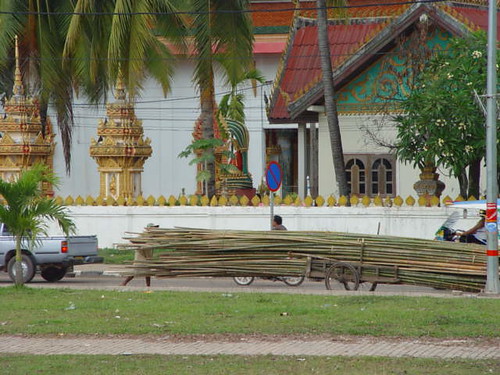
For Lao, as we face epic levels of deforestation today and watch much of the culture connecting modernity with glass and steel, I think a great deal of interesting ideas could emerge if we explored what it would be like if we had developed societies based on environmentally-sound technologies.
Similar arborsculpture has been done for decades to create chairs, tables, and furniture. Could it be done to make a palace or monastery over time? An interesting notion, although it would certainly be an intensive project spanning several generations:
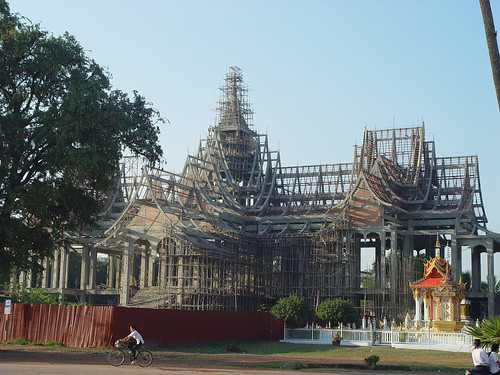

Meanwhile, Ming Tran, for example, came up with a concept for folding houses following a 7.9 magnitude earthquake that killed 69,000 people in central China. His question he faced was: how do you create an easily produced, cheap and environmentally-friendly shelter?
His result are designs that use folding bamboo structures that blend beauty and dynamic, adaptable practicality. Bamboo poles are pre-assembled into rigid geometric shapes. According to Tran, the geometry of the forms gives each structure its integrity, and a range of lightweight modular structures can be quickly assembled in factories and transported to destinations where they're needed. Once the frames are in place, recycled paper covers the frames:
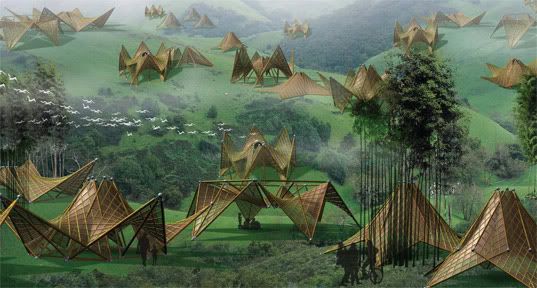
How would such societies respond if they encountered societies such as those currently in vogue among steampunk writers and artists? Brass and Iron vs. Bamboo?

His result are designs that use folding bamboo structures that blend beauty and dynamic, adaptable practicality. Bamboo poles are pre-assembled into rigid geometric shapes. According to Tran, the geometry of the forms gives each structure its integrity, and a range of lightweight modular structures can be quickly assembled in factories and transported to destinations where they're needed. Once the frames are in place, recycled paper covers the frames:

How would such societies respond if they encountered societies such as those currently in vogue among steampunk writers and artists? Brass and Iron vs. Bamboo?

No comments:
Post a Comment